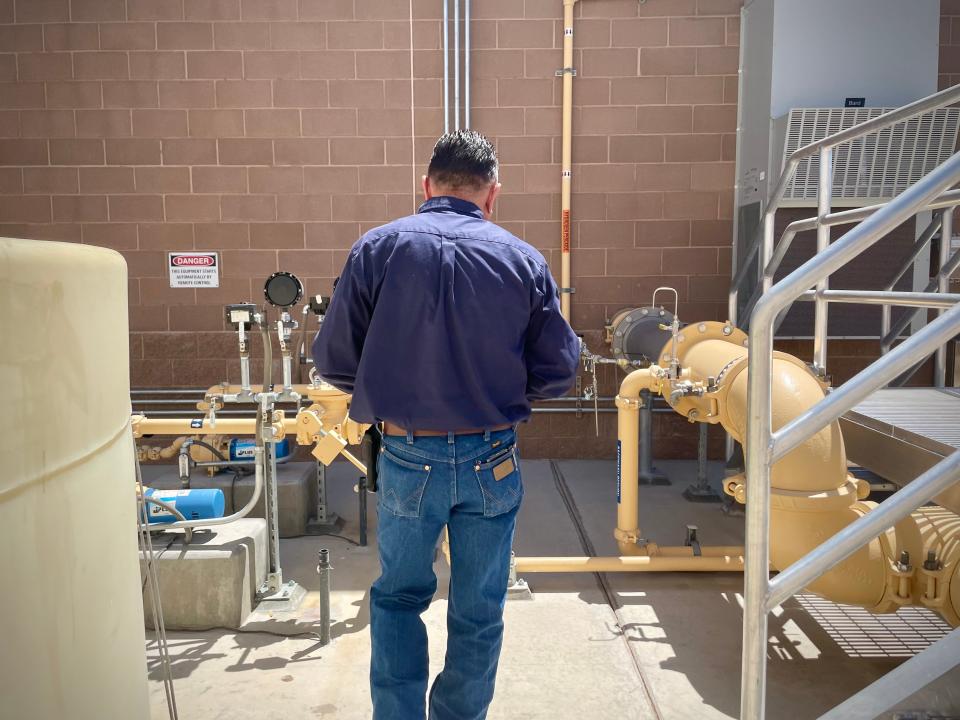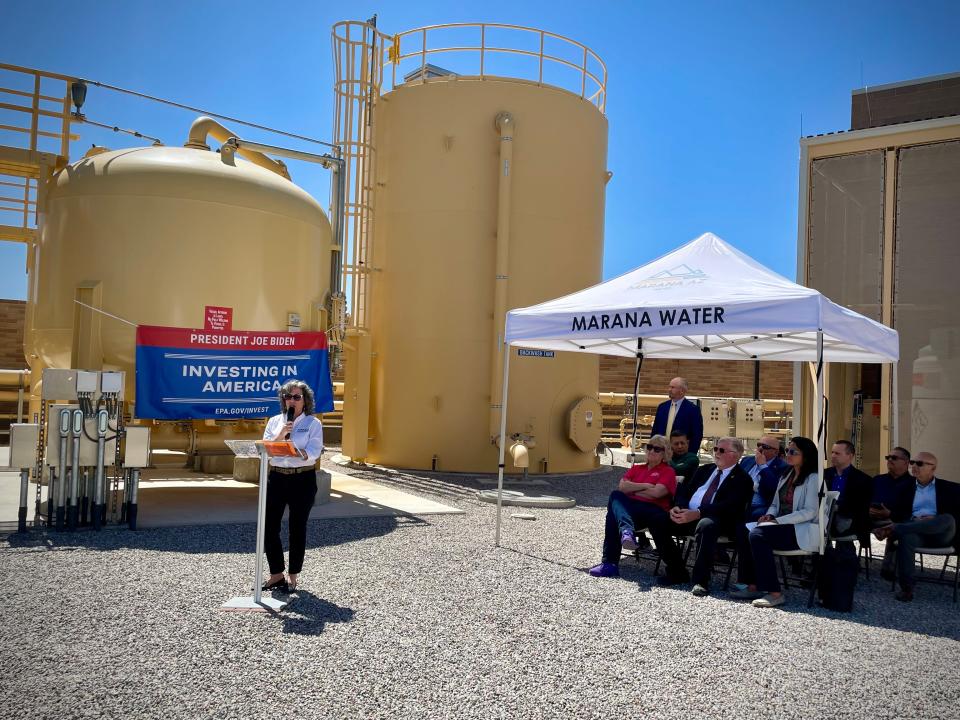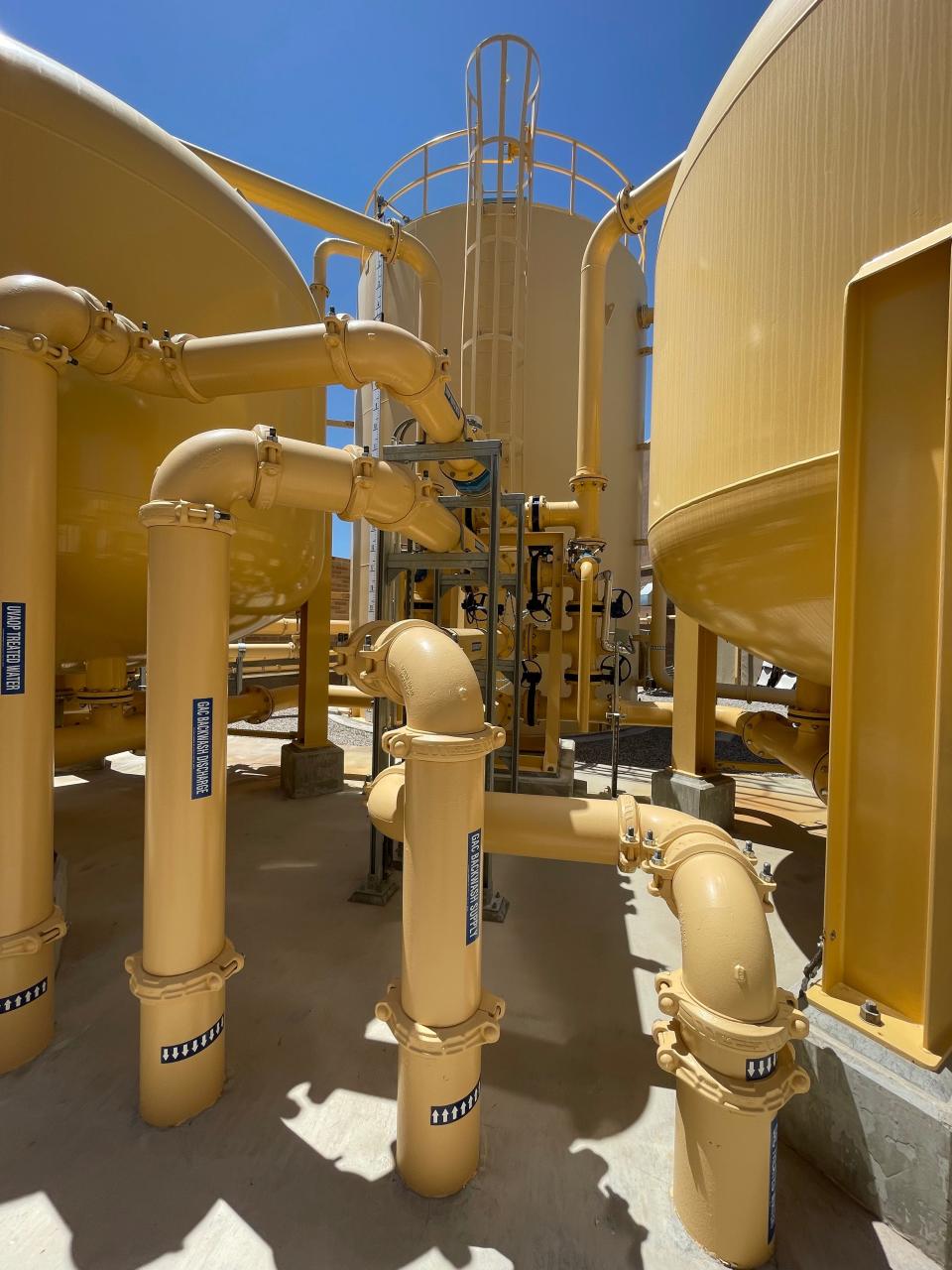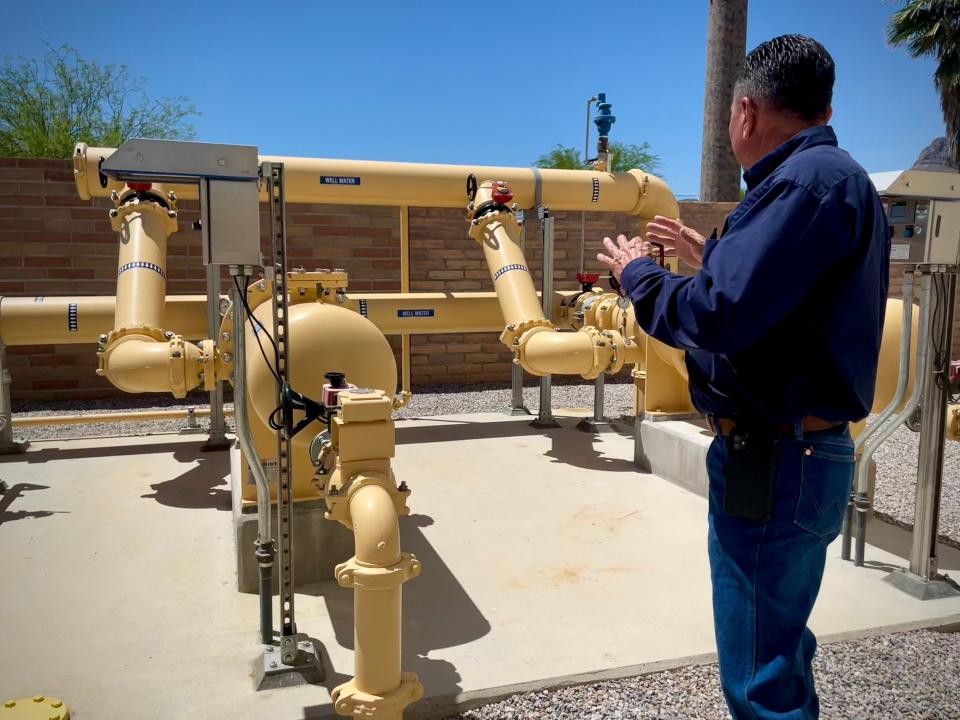Tucson-area utilities will use funding to remove 'forever chemicals' from drinking water
MARANA — Tucson, Marana and the Metropolitan Domestic Water Improvement District will build new treatment plants to remove hazardous PFAS chemicals from the drinking water supply with the help of federal and state funding.
The announcement was made by local leaders on Thursday at an event held by the Water Infrastructure Finance Authority of Arizona and the U.S. Environmental Protection Agency. The EPA last month set enforceable limits for the so-called "forever chemicals" in drinking water, aiming to protect public health by reducing exposure.
Worldwide, the use of these human-made chemicals, perfluoroalkyl and polyfluoroalkyl substances, has tainted water supplies and contaminated soils. PFAS have been widely used in numerous industries and products, including firefighting aqueous film-forming foam, which is deployed in fire responses and drills at airports and military bases. They are hard to destroy and can accumulate in the environment.
In Arizona, some utilities acted to contain and treat PFAS in groundwater, or found new water sources, before the federal order. Tucson and Marana made out-of-pocket investments and began treating the water for PFAS about three years ago.

Thursday's announcement was held in front of one of these plants, less than a month after EPA announced official maximum contaminant limits for five PFAS chemicals.
That wouldn't be possible "if you didn't have communities like Marana, Tucson that were leaning in, that were leading, that we're taking the risk on behalf of their customers and then worrying about the money after they made the right decision," said Timothy Thomure, deputy city manager of Tucson and a WIFA board member.
EPA's Regional Administrator Martha Guzman said state and city officials at the event are "problem solvers."
"It takes leadership and it takes people committed to making sure that their constituents have safe drinking water," she said. "Obviously a big part of these solutions take money."
Reducing danger: Firefighters face cancer risks from harmful chemicals. Here's how they're working to limit exposure
Money will help build plants
Speakers touted the $9 billion from the Bipartisan Infrastructure Law that will be distributed to public water systems across the U.S. to help address contamination from PFAS and other emerging contaminants.

Arizona has $42 million of that money available for PFAS testing, treatment, infrastructure improvement and education. The fund is administered between the Arizona Department of Environmental Quality and WIFA.
WIFA can give a total of $14.8 million of the funding in "forgivable principal" each fiscal year to water systems — a forgiven loan. But it has other sources of money, like the Drinking Water State Revolving Fund, to provide additional loans. They urged utilities to seek their help.
Tucson received a $33 million loan for the construction of a new treatment plant, and received loan forgiveness from WIFA for $10.1 million. The effort will help get 28 contaminated wells, northeast of Tucson and south of Marana, back online, as The Arizona Republic previously reported.
The town of Marana received a $16.1 million loan from this funding to help pay for two PFAS treatment plants which began operating in 2021. The town also received about $8 million in forgiven principal for two other PFAS-related water projects.

The Metropolitan Domestic Water Improvement District, or Metro Water District, which serves about 70,000 customers in unincorporated Pima County, will install two well-head treatment systems with granular activated carbon using about $730,000 from WIFA, a 100% forgivable loan.
From a different funding source, it also received a $1.2 million grant from ADEQ to install an advanced oxidation process at both sites.
The Tohono O'odham Nation received a $50,000 grant to help test wells for PFAS contaminants close to the affected area Tucson Water is treating.
ADEQ has also invested some of that money to help public water systems in Globe, Star Valley and Payson. Twin Lakes Mobile Home Park and the town of Chino Valley are also in ADEQ’s pipeline for federal funds, the agency said.
What to know: Are PFAS really 'forever chemicals'? It's complicated
Where is the contamination coming from?
PFAS contamination in the area likely comes from industrial manufacturing and the use of firefighting foam on military sites and airports. High levels of PFAS in groundwater are found near Davis Monthan and the Morris Air National Guard Base. The plume traveled northwest affecting wells in other systems.
Groundwater around Glendale’s Luke Air Force Base, Yuma’s Marine Corps Air Station and the former Williams Air Force Base near Mesa also has high PFAS levels. Across Arizona, at least 70 water systems have a well with PFAS levels above the EPA limit, according to ADEQ data.
Marana and Tucson each have two treatment plants that deal with PFAS.

Tucson expects to have a new PFAS treatment facility online by the end of 2026. It will also install an ion-exchange system in one of the existing plants to improve PFAS treatment.
The utility is still dealing with TCE and 1,4 dioxane contamination from industrial and military defense activities from the 1940s to the mid-1970s. Long-term clean-up in the Tucson International Airport Area Superfund site is still not over, and the PFAS contamination plume has added a new challenge.
Marana, which has a lesser but still high concentration of PFAS in several wells, will also expand treatment, with three new plants costing about $12 million each, according to Marana Mayor Ed Honea.
Two highly productive wells in unincorporated Pima County are also affected. Joe Olsen, general manager of the Metropolitan Domestic Water Improvement District, said that has forced the utility to rely on less productive wells.
With the WIFA funding, they will install granular activated carbon filters in each well to treat PFAS, which should help contain the plume.
Some of the wells were also affected by TCE and 1,4 dioxane. ADEQ awarded $1.2 million to Metro Water so they can also install an advanced oxidation process treatment facility. The whole system would operate just like the existing Marana plants, but at a smaller scale.
Utilities continue to monitor PFAS closely and have temporarily closed some affected wells.
Robert Jaramillo, a community leader who suffered and lost relatives from the water contamination in Tucson's southside, said he applauds the proactive approach to PFAS.
"What's frustrating to me: the ones that should be paying for the cleanup are the responsible parties," he said. "Where are they in this whole picture? Where are they?"
EPA designated two PFAS chemicals, PFOS and PFOA, as "hazardous substances" in April under the Comprehensive Environmental Response, Compensation, and Liability Act, or CERCLA.
Guzman, with the EPA, said that translates to: "this is a chemical that you have to address in all Superfund sites that have it."
Clara Migoya covers agriculture and water issues for The Arizona Republic and azcentral. Send tips or questions to clara.migoya@arizonarepublic.com.
You can support local journalism in Arizona by subscribing to azcentral.
This article originally appeared on Arizona Republic: Tucson-area providers will build PFAS treatment plants

